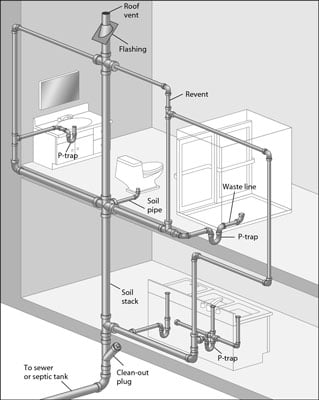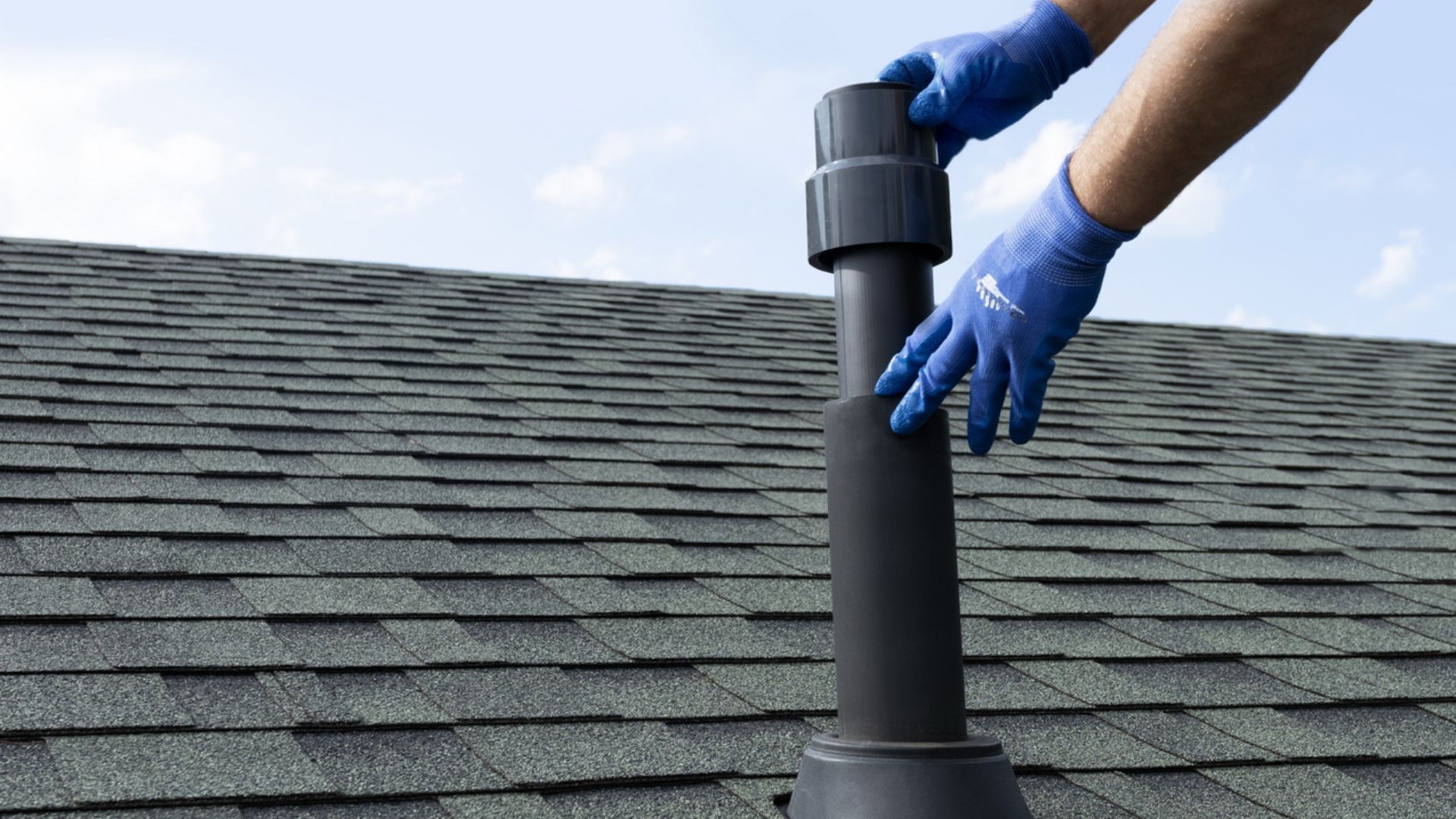Achieving Proper Ventilation in Your Plumbing System: The Reason
Achieving Proper Ventilation in Your Plumbing System: The Reason
Blog Article
What are your thoughts concerning Why Plumbing Air Vents Are Important?

Proper ventilation in pipes systems is usually neglected, yet it is essential for keeping the capability and security of your home's pipes. Ventilation assists regulate air pressure, prevent the build-up of hazardous gases, and make certain the effective removal of waste. In this overview, we will explore the significance of proper plumbing air flow, how it functions, and the advantages it brings to your pipes system.
Recognizing Air Flow in Pipes
Air flow in pipes describes the network of pipes that enable air to move via the drainage system. These vents offer multiple functions, including regulating atmospheric pressure within the pipelines, preventing sewage system gases from getting in the home, and aiding in the smooth flow of wastewater.
Just How Ventilation Functions in Plumbing Equipments
Atmospheric Pressure Policy
Correct air flow keeps balanced air pressure within the pipes system. When water flows through pipelines, it displaces air. Without ample air flow, this displacement can create unfavorable stress, bring about slow drains pipes or siphoning of water from catches, which can create undesirable odors to permeate right into the home.
Preventing Sewage System Gas Accumulation
Among one of the most important functions of plumbing vents is to avoid drain gases, such as methane and hydrogen sulfide, from collecting within the home. These gases can pose major health risks and are highly flammable. Vent pipelines enable these gases to get away safely outdoors.
Aiding in Waste Removal
Air flow helps in the efficient removal of wastewater by preventing airlocks in the drainage system. When air can flow freely through the vents, it permits water and waste to stream efficiently with the pipelines, decreasing the danger of blockages and back-ups.
Kinds Of Pipes Vents
Main Heap Vent
The major pile air vent, additionally referred to as the vent pile, is the primary vent in a pipes system. It prolongs from the main drain align via the roof covering, permitting gases to run away and fresh air to get in the system.
Branch Vent
Branch vents connect to the main pile air vent and offer individual fixtures, such as sinks, bathrooms, and showers. These vents make certain that each component has ample ventilation to function properly.
Air Admittance Valve (AAV).
An Air Admittance Shutoff (AAV) is a one-way valve that permits air to get in the plumbing system without the requirement for a traditional air vent pipeline expanding with the roof covering. AAVs are typically used in improvements or areas where installing a common vent is unwise.
Signs of Poor Ventilation in Plumbing.
Slow Draining Fixtures.
If your sinks, bathtubs, or bathrooms are draining slowly, it could be a sign of bad air flow. Insufficient air flow can create a vacuum cleaner effect, making it difficult for water to drain pipes effectively.
Gurgling Sounds.
Gurgling noises coming from drains pipes are frequently a result of air being drawn through water catches because of adverse stress in the pipelines. This is a clear sign of insufficient air flow.
Unpleasant Smells.
Sewer odors inside your home are a red flag that your pipes system is not effectively ventilated. This can mean that drain gases are not being adequately aired vent outside, bring about potentially hazardous problems.
Usual Air Flow Mistakes.
Inadequate Vent Sizing.
Utilizing undersized vent pipelines can result in inadequate air circulation and stress discrepancies in the system. It's necessary to make use of vents that satisfy the specific needs of your plumbing system.
Improper Vent Positioning.
Positioning vents as well much from the components they offer can reduce their performance. Proper placement ensures that air can move openly and successfully through the system.
Disregarding Code Demands.
Building ordinance provide certain guidelines for pipes ventilation. Disregarding these codes can result in a system that falls short to operate appropriately and may bring about costly repairs or carcinogen.
Benefits of Appropriate Ventilation.
Enhanced System Effectiveness.
Correctly aerated pipes systems operate a lot more effectively, with less obstructions, faster draining, and less pressure on the pipelines. This efficiency extends the lifespan of the pipes system.
Improved Air High Quality.
By avoiding sewer gases from entering your home, appropriate ventilation contributes to much better interior air top quality, making your living setting healthier and more comfortable.
Stopping Water Damages.
Appropriate air flow aids avoid water from being siphoned out of traps, which can result in sewer gases getting in the home and triggering water damage in time.
Steps to Make Sure Correct Ventilation.
Consulting Plumbing Codes.
Constantly speak with local pipes codes when making or customizing your plumbing system. These codes offer the needed guidelines for proper airing vent and ensure your system meets security criteria.
Normal Evaluation and Upkeep.
Normal evaluations can aid recognize potential air flow issues before they come to be significant problems. Maintenance tasks, such as cleaning air vent pipelines and looking for blockages, are necessary for maintaining the system in good working order.
Professional Installment.
For new installments or significant modifications, it's a good idea to employ a specialist plumbing professional. They have the know-how to make sure the air flow system is appropriately created and mounted according to code.
Conclusion.
Correct ventilation is a vital element of any pipes system, ensuring that it functions successfully and securely. By recognizing the value of air flow, identifying the indicators of poor ventilation, and taking actions to maintain your system, you can prevent expensive issues and shield your home's air quality.
What is a Plumbing Vent and it's used for?All plumbing systems in residential and commercials construction have a plumbing vent. It doesn’t just vent unwanted odors from the drainage system to the outside; it actually serves an important purpose by supplying air to the system.
The plumbing drainage system is actually called a drainage, waste and vent (DWV) system. When water flows down the piping, an air supply (vent) is needed to allow the water to flow. Think of the vertical pipe as a drinking straw. If you plug the top end of a straw, liquid won’t drain from it.
The DWV system in your building consists of a series of pipes connected to each fixture; they extend above each fixture, and the system terminates at an open pipe that extends through the roof. This piping allows air into the system and prevents unbalanced pressures in the piping.
?The vent also prevents the system from drawing water out of a trap at the fixture with the characteristic “glug-glug-glug” as the drain gasps for air. Plumbing traps should drain smoothly and never “glug” or gasp for air.
If you have a drain that empties slowly or gurgles as it drains, this may indicate a venting problem. If you flush a toilet and the sink gurgles, there’s definitely a vent problem. It is good idea to have a Plumber check this.
https://www.ameliashomeinspection.com/blog/what-is-a-plumbing-vent-and-its-used-for

As an avid person who reads on Why Plumbing Air Vents Are Important, I think sharing that excerpt was worthwhile. Loved our blog? Please share it. Help others find it. We thank you for your readership.
Call Today Report this page